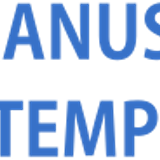Isoprenoid Hydrocarbons As Fingerprints For Identification Of Spill Oils In Indonesian Marine Environment
Abstract
Along with the increasing transport of crude oils to the refinery sites, many accidents of oil spills have been occurred in Indonesian waters. Such spills might be purely an accident but some others are suspected to be deliberately spilled. Nevertheless, both cases need an identification system to trace back the spill source and eventually the spill data can be brought to the court as an evident. Previously, the identification system was conducted through a pattern recognition of n-paraffin hydrocarbons of crude oil samples which are very distinguished from their gas chromatographic (GC) pattern of n-C17, Pristane, n-C18, Phytane, and other nparaffin’s down to n-C30. Unfortunately, some crude oils have similar pattern that matching of two chromatograms could give an ambiguity result. Pattern recognition of isoprenoid hydrocarbons have been developed to characterized crude oils that potentially pollute the Indonesian waters. Differing from the n-paraffin that each hydrocarbon peak can be determined definitely, the developed method does not need to identify each of the isoprenoid hydrocarbons, instead pattern of their chromatographic separation are sufficiently distinguished. GC isoprenoid pattern recognition is made from the isoprenoid peaks that emerge between n-C17 and n- 18. It two crude oils having similar pattern of n-paraffin’s show very distinct pattern of iso-paraffin’s. The method thus can be used as complimentary step in matching the GC pattern of crude oil samples . Although in some cases GC isoprenoid peaks are not completely separated, this would not be disadvantages since their retention time and area can be measured and integrated definitely, respectively. Nevertheless, the separation of iso-paraffin peaks can be easily conducted using a recent GC method namely a comprehensive two dimensional gas chromatography (GCxGC), a method which is recommended to be implemented further in this research.
Keywords
Full Text:
PDFReferences
Mulyono, M and Murad, A, 1987, “Penyidikan
Tumpahan Minyak Bumi dengan Metode
Spectrofluorometri”, Proceeding pada Seminar
Himpunan Kimia Indonesia, Surabaya.
Mulyono, M. and R. Desrina (1988) “Fingerprinting
of Crude Oils by the Infrared Spectrophotometry
Method”, Proc. 17th Annual Convention Indonesian
Petroleum Association, vol. II, Jakarta,
pp. 305-310.
Mulyono, M., (1989), “Fingerprinting Minyak
Bumi”, Laporan Penelitian In-house 1988/1989,
Buku 38, Pusat Penelitian dan Pengembangan
Teknologi Minyak dan Gas Bumi “LEMIGAS”,
Jakarta.
Bentz, A.P. (1976), “Oil Spill Identification”, Analytical
Chemistry., 48, (6), 454A-472A.
Morison, R.D., 2000, Critical Review of Environmental
Forensic Techniques: Part II, Environmental
Forensics, 1, 175-195
Desrina, R., 2007, Inventarisasi dan Identifikasi
(Fingerprinting) Minyak Bumi yang Berpotensi
Mencemari Lingkungan Perairan Indonesia,
Kegiatan No. 05.04.03.0040.1514 A , unpublished
report, PPPTMGB “LEMIGAS”, Jakarta.
Frysinger, G. S., and Gaines, R. B. 2001. Separation
and identification of petroleum biomarkers by
comprehensive two-dimensional gas chromatography.
J. Sep. Sci. 24:87–96.
Frysinger, G. S., Gaines, R. B., and Reddy, C. M.
GC×GC: A new analytical tool for environmental
forensics. Environ. Forens 3:27 –34.
Frysinger, G. S., Gaines, R. B., Xu, L., and Reddy,
C. M. 2003. Resolving the unresolved complex
mixture in petroleum-contaminated sediments.
Environ. Sci. Technol. 37:1653–1662.
DOI: https://doi.org/10.29017/SCOG.31.1.857

This work is licensed under a Creative Commons Attribution-NonCommercial-NoDerivatives 4.0 International License.






